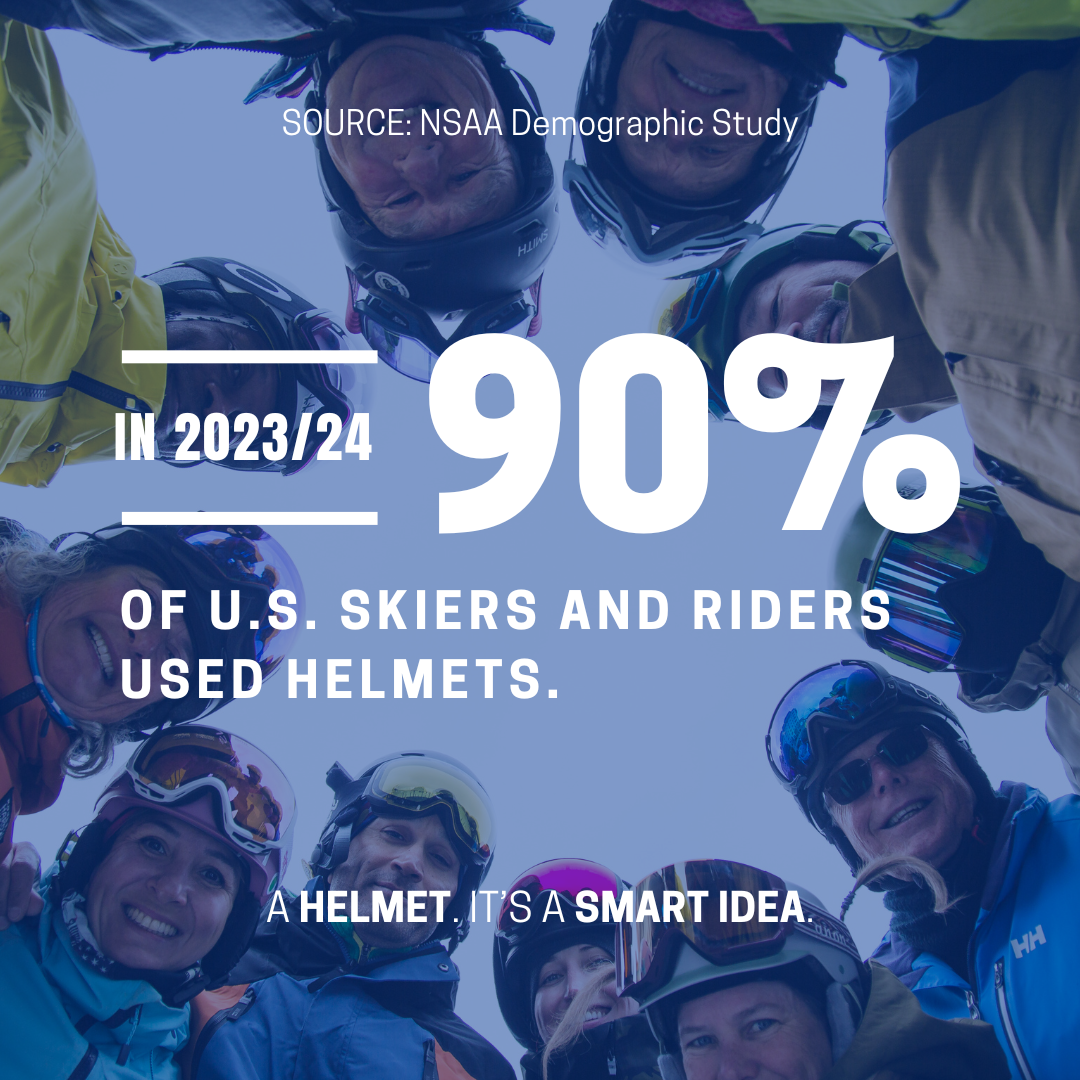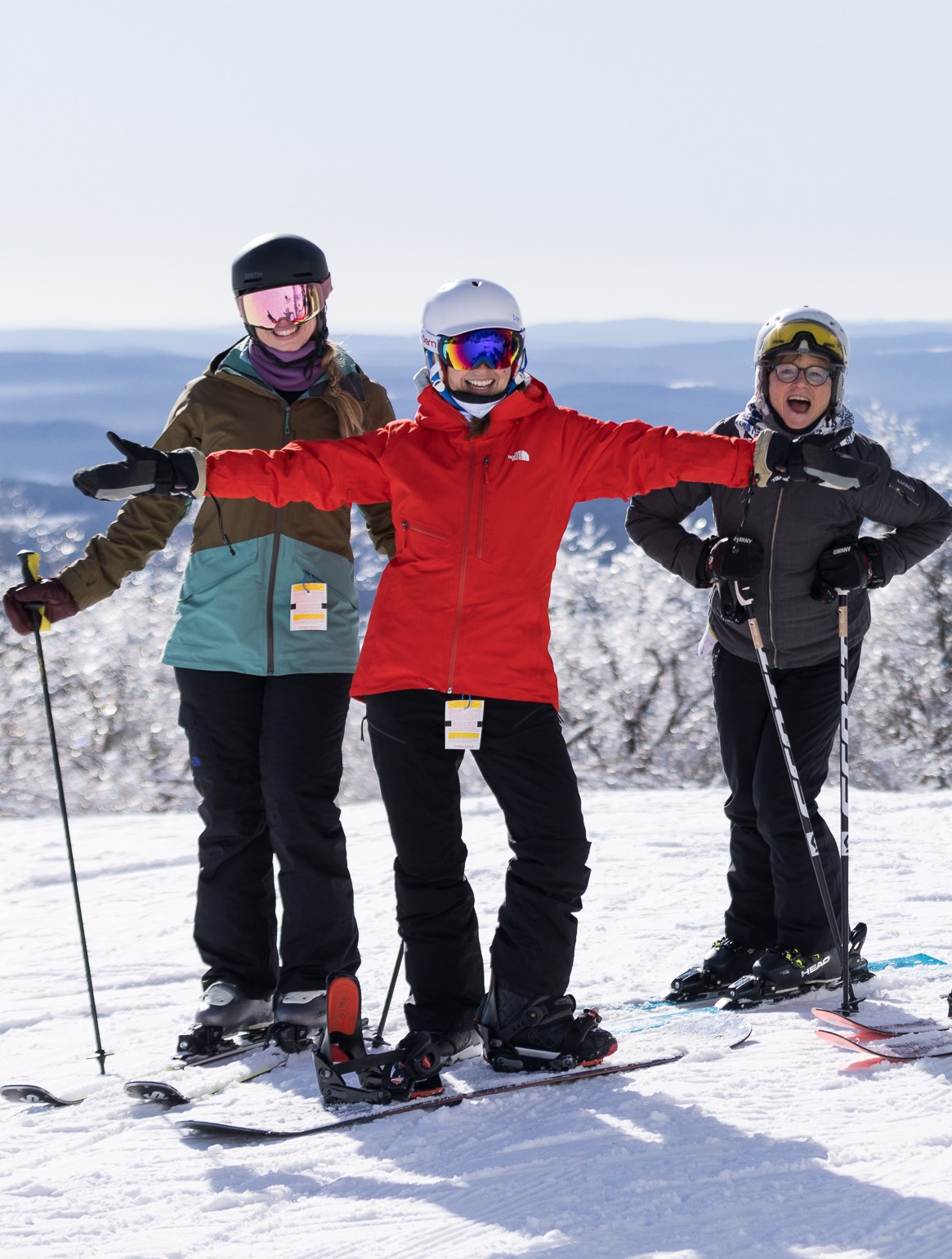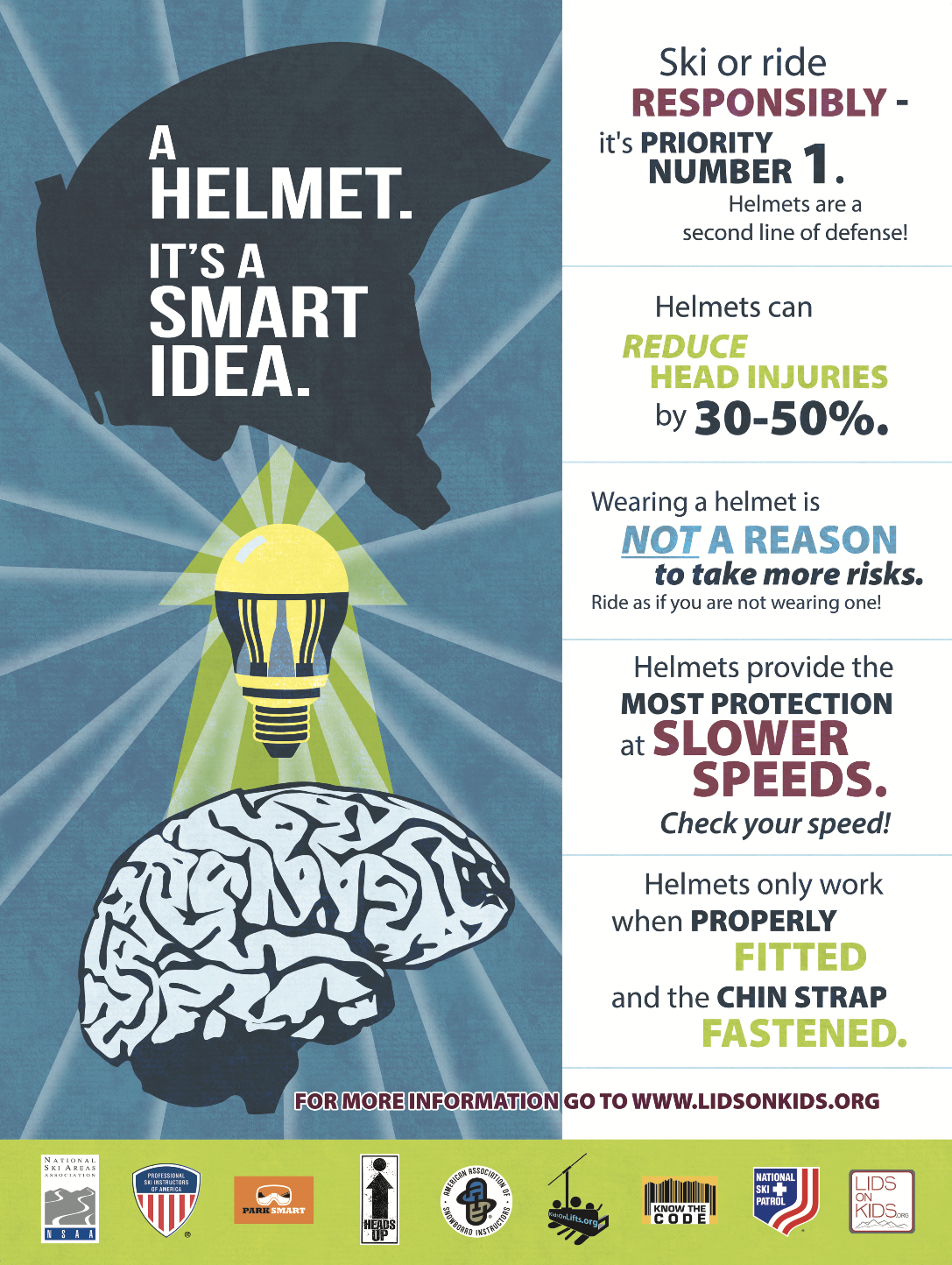
Helmet Safety
Helmets are Important
We urge all participants to wear a helmet, but to ski or ride as if they are not wearing a helmet. Whether you’re an experienced rider or just hitting the slopes for the first time, wearing a helmet can make all the difference in staying safe and enjoying your time on the mountain.
Skiing and snowboarding in a controlled and responsible manner is the primary safety consideration for all. A participant’s behavior has more to do with their safety and that of others than any piece of equipment.
Limitations of Helmets
Helmets protect your head, but they don't prevent all injuries, especially from high-speed impacts or collisions with obstacles. Always ski within your ability, stay alert, and follow safety guidelines. It’s important to understand that helmets are far less effective at higher rates of speed. Remember, a helmet is just one part of staying safe on the slopes.
Helmets and Kids
Wearing a helmet while skiing or snowboarding reduces the risk of head injuries. They are most effective when you ski or ride at slower speeds. Bonus: they also keep your head warm! Not all ski areas require helmets, but it is a good idea to outfit your child with one and wear one yourself.
While wearing a helmet is a personal choice, you would be setting a good example for the young ones in your family if you chose to wear one while skiing or riding. Nearly all ski areas rent helmets to the public. Make sure your helmet is properly fitted and the chin strap is fastened.




More People Are Wearing Helmets
The overwhelming majority of skiers and riders are wearing helmets. Helmet usage has grown dramatically over the last two decades. The overall percentage of participants wearing helmets increased from 25% in the 2002–03 season to 90% in the 2023–24 season.

